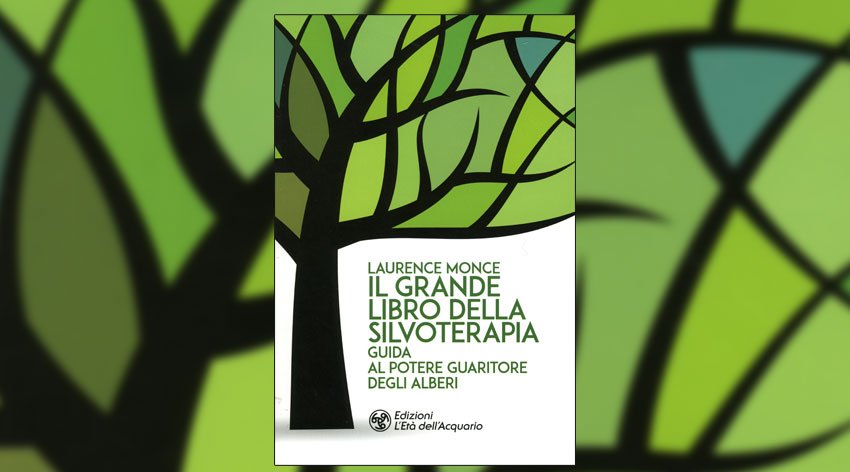Today I am accompanying a group of people who will be doing a two-day silvotherapy treatment. In contrast to the forest bath, which lasts only a few hours, the cure is a true stay immersed in Nature, during which each person can discover more about himself or herself and the forest, benefiting from the therapeutic effects of the surrounding ecosystem. Caring is made up of silences, light and shadow, colors, sounds, scents, and most of all emotions. The forest is a setting where interdependent organisms, animal and plant, coexist. Each, following its own rhythm, attunes itself to the elements of nature. The forest is the ideal place to stimulate all our senses, which are necessary to receive information about the environment. They allow us to distance or approach, to conceptualize and discern. They help us in building our identity and personality, sharpening our curiosity about the outside world.Sight is stimulated by the color of the surrounding vegetation. It is a color therapy session that takes place in front of our eyes, endowed with a tone-sedative action. When we walk through the forest in the shade of the verdant foliage, we expose our bodies to a series of electromagnetic waves called photons. These waves interfere with the cells of our body, sedating or stimulating them. The colors of short electromagnetic waves, such as the green of broadleaf trees or the blue-green of conifers, have a calming effect on our bodies. The heart rate slows down, the nervous system self-regulates, and blood pressure is balanced. Colors, as such, do not exist in the physical world. They are nothing but light energy. Green, so present in nature in spring and summer, symbolizes life and rebirth. If we look at green leaves, we can see the center of the color spectrum produced by sunlight. This meeting between the sun and the earth represents the central axis and promotes good mental and psychological balance. Through this color we can go to the discovery of outer nature as well as our inner nature.According to Vasily Kandinsky, a pioneer of Abstractionism, each color corresponds to a shape: blue is associated with circle, green with circle and triangle. It is a confirmation of the tone-sedative effect of these two colors, as the circle has a calming action, while the triangle, being pointed, is more stimulating.In autumn, green gradually fades away to make way for red and yellow. According to Ewald Hering’s theory of opposites, in this color mixture the eye perceives the color gray. In fact, it seems that the principle of color persistence changes the perception, and after looking at red and green leaves, if we close our eyes, our brain will only see gray. This is perhaps why, in addition to the decrease in brightness, our mood tends to become darker in this season. In addition, the color red is associated with the square, closed and rigid shape. When the green totally disappears, nature catches fire: leaves turn red, yellow, brown or orange. If we observe the treetops, the leaves will appear like a thousand candles that are consumed, forming an immense brazier, before extinguishing with the coming of winter. The warm colors of the leaves, combined with certain fruits such as those of the hawthorn, bring a lively touch of red, decorating the forest.The trunks, dark brown or even white in the case of the birch, are soothing and restful. As we approach them, we will notice the roughness or smoothness of their bark; even before we touch them, we already know what feeling we will get from caressing them.The forest also offers a large number of flowers: the white or pink ones of horse chestnuts, the white ones of cherry trees, and the generally green catkins of other plants.As we observe the trees transforming with each season, we discover a myriad of colors that change day by day, to the great delight of our bodies.If colors have a psycho-emotional resonance, the shapes that nature offers us also act on our minds.Upon closer inspection, our eyesight is subjected to a large number of geometric patterns, lines, curves, triangles, circles, cones, spheres and even hearts.First of all, the vertical shape of the trunks reminds us that, like trees, we stand between the earth and the sky. This verticality evokes life and good health, reassuring us by giving us strength and confidence.Branches, bifurcations and roots are all extensions of the trunk. Symbols of unity and mutual aid, it is through them that the tree occupies its position in space. Think of how good it feels under a broad, harmonious canopy, and how it makes one less pleased with the sight of a flayed, puny and fragile tree!Straight or horizontal branches evoke balance, while twisted, drooping and downward-bending branches represent fragility and discomfort.Foliage features are equally emotionally expressive. Broadleaf trees have leaves with more feminine shapes, pleasing to the eye because of their smoothness and lightness. In contrast, conifers have shaggy needles that evoke the masculine side, roughness and strength, as in the case of the black pine. But there are also conifers with more mellowed forms, such as Aleppo pine, that evoke a more serene and less aggressive impression.
The importance of the senses
Hearing is a particularly crucial sense for our sylvan healing, because it makes us realize how alive nature is beyond its apparent apathy. The forest is often appreciated for its silence. Now, if we give ourselves a moment’s pause and listen carefully, we will begin to hear a series of buzzing and rustling noises, like that of fronds rustling in the wind and varying from tree to tree. Have you ever heard the rustle of the leaves of a quaking aspen, an oak tree, or that of the needles of a spruce tree moved by the wind? You will be surprised at the difference. If you stretch your ear, then, you will surely hear the creaking of branches, the buzzing of an insect not far away, the drumming of a green woodpecker, the song of a bird, the chirping of crickets, the gurgling of a stream. Listening to the sounds of nature allows us to develop attention and concentration.
Touch is a means of connecting directly to nature. The hand is our conduit to the environment. Our bodies feel a vital need to be connected to the reality around them, and the sense of touch is essential to learn more about the world. Exploratory gestures help us perceive and fully identify with nature. Children, in particular, are very sensitive to discovering and learning about concave or convex, straight or curved shapes. Touch facilitates memorization and concentration. The feelings experienced in turn create new artistic emotions, which are important for cognitive development. As parents caress a child, so we can caress a tree, brush our fingertips over the roughness of the bark of the willow or linden tree, the smoothness of that of the birch, the roughness of that of the fir. By brushing the leaves with our fingers we learn to connect with the tree and get to know it better. The development of touch has the effect of reassuring and comforting us. Have you ever stroked your cheek with a tree leaf? The sensations change according to the essences, that is, the tree species. Touch is a means of contact between us and the tree. The tactile approach allows physical contact to be established, which, in all likelihood, is the primary one. From the relationship established through touch springs a comfort and security that allows us to express ourselves more spontaneously, as if we were dealing with a person. After all, isn’t the first gesture we make when we meet someone is to shake their hand?
The sense of smell directly stimulates the limbic system of our brain, also known as the “emotional brain.” Have you ever noticed how the smell of your favorite dish wafting through the kitchen stimulates your appetite or how the smell of a person stirs up certain memories for you? Our brains are capable of recognizing a variety of smells. The sense of smell constitutes a gateway to the unconscious, and our emotions give great freedom to the imagination. Nature offers us a thousand scents: flowers, mosses, mushrooms, but also aromas produced by plants, such as camphor or turpentine. By rubbing a leaf, it is possible to smell the aromas it jealously guards in its secretory pockets. But these sweet effluvia are ephemeral unless you can preserve them in your memory.
Taste gives us a chance to reconnect with memories and emotions. Through him we explore our primary survival instinct. Our taste buds provide cues about bitter, sweet, sour flavors–and their perception is closely related to the sense of smell. When we exhale while eating, in fact, some particles of the food in our mouth are expelled from our nose, thus stimulating the olfactory receptors. Nature offers us several opportunities to enjoy its flavors: young leaves (especially of beech, to be eaten in salads), berries (blackberries, strawberries, wild strawberries…), fruits (hazelnuts, walnuts, chestnuts, beechnuts…), mushrooms (porcini, chanterelles…), barks (such as cambium) from which a flour is made, seeds such as pine nuts.

